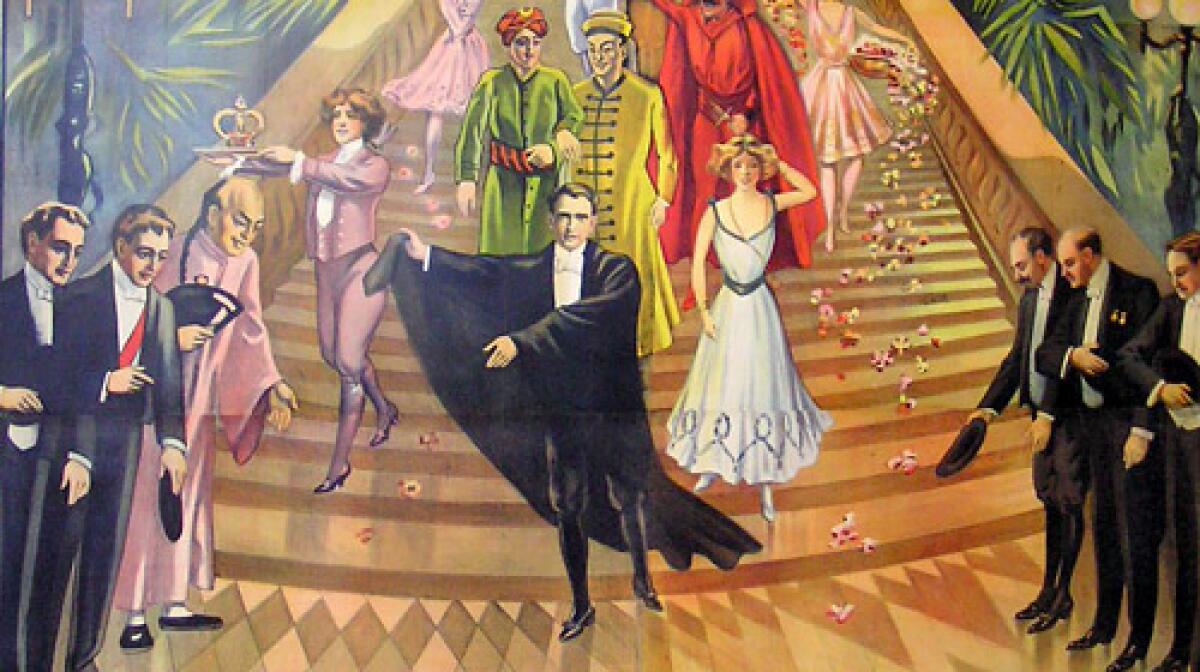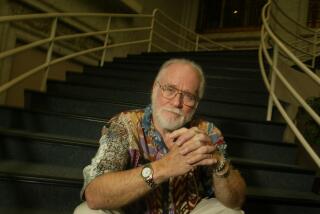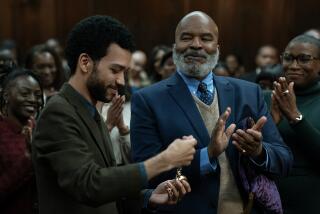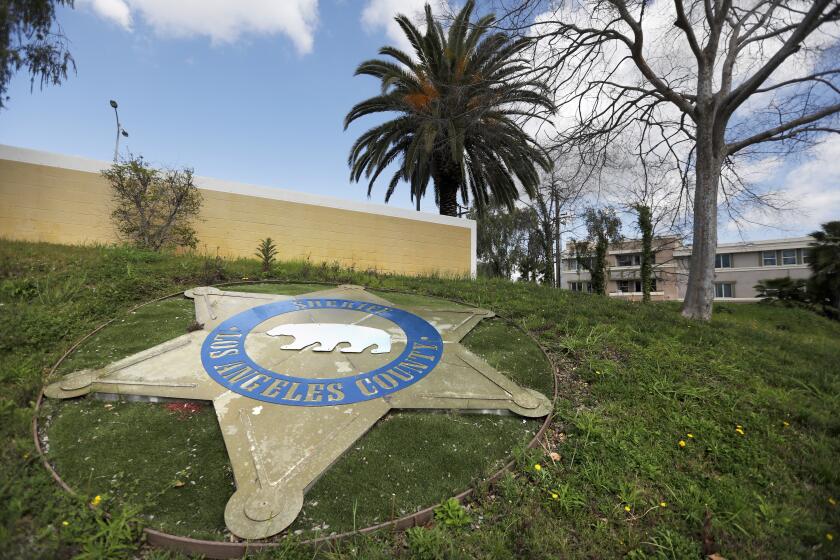From the archives: 10th Los Angeles Conference on Magic History

As exclusive gatherings go, this one was noteworthy, even by the high local standards set by A-list Hollywood, with attendees including a former acting director of the CIA, at least one prime-time TV star and half of Penn & Teller (the smaller, quieter half).
That last guest is perhaps the one clue you need to figure out the subject of their mutual interest: magic. Or more specifically, the history of the art, as long-dead prestidigitators, illusionists and “miracle” workers were resurrected for the 10th Los Angeles Conference on Magic History, held Nov. 8-10 in North Hollywood.
The biennial invitation-only conference -- so exclusive that it generally takes a death to create an opening for the following event -- is billed as “a unique weekend of wonders” by its organizers and the “hottest ticket in magic” by the editor of a leading magicians’ magazine. The conference attracts an eclectic group of attendees who share a passion for magic history; I’m one of them, having attended more than half of the events, starting with the first in 1989.
I got hooked on magic after I saw Harry Anderson, star of TV’s “Night Court” at the time, perform at a comedy club. He used magic in his act.
After learning a few, small magic tricks, it was clear I was no performer. But I became fascinated with the psychology of magic and its history. I eventually went to work for the magician, publisher and conference organizer, Mike Caveney.
“I’m the bally man. I turn the tip,” Caveney says of his emcee role at the conference. The bally man was the fellow at carnivals who convinced people to “come on in” to the sideshows and see “nature’s oddities.”
The invitation to attend this year’s conference came in the form of a puzzle. When assembled, it read, “You are cordially invited to the Queen of Hearts’ party, the long-awaited encore of Dr. Hooker’s ‘Impossibilities and Rising Cards.’ ”
Dr. Hooker and his effects have achieved a reputation of mythical proportion in the magic community. His “masterpiece” was the rising cards. To someone unfamiliar with magicians’ methods, the trick may look unremarkable. A card is selected by an audience member and then rises from a deck onstage.
But there were subtleties employed by Dr. Hooker that have baffled the greatest minds in magic from Harry Houdini to present-day magic scholars.
John Gaughan restored and presented the half-hour re-creation of Dr. Hooker’s show, aided by “Miltiades III,” the animated head of a teddy bear. Dr. Hooker chose the name Miltiades from his granddaughter’s storybook, “Adventures of Miltiades Peterkin Paul.”
Gaughan, an award-winning builder of magical effects, is another of the conference organizers. His quiet, modest demeanor fits well with the slower paced presentation style of the early 20th Century effect.
Brian McCullagh made the “very expensive” trip from Australia specifically for Gaughan’s show. McCullagh, who has attended four of the conferences and lectured in 1997, said he had originally read of Dr. Hooker in the 1950s. He called Gaughan’s presentation “brilliant.”
McCullagh became interested in magic as a boy and tried his hand at performing. “But I found that as a performer, I make a better math teacher,” McCullagh said.
While many magicians’ secrets were revealed during the conference, Gaughan is keeping those of the “Impossibilities” to himself. Richard Kaufman, editor of the magicians’ magazine Genii, wryly suggested that perhaps water-boarding would get Gaughan to talk.
Besides the rising cards, the Conference on Magic History offered the 250 registrants an , and .
The conference, since its inception, has been held at the Beverly Garland Holiday Inn in North Hollywood. The number attending is still small compared to other mainstream magic conventions. But there were just 120 at the first; that group fit nicely into a small theater at the hotel. The popularity of the conference has increased the number attending, and now all the events are held in the hotel’s ballroom.
This year’s conference, as a result, lacked some of the friendly intimacy of earlier gatherings. A few of the speakers, reading woodenly from notes or neglecting to present graphics, gave some in the audience an opportunity to grab a quick nap. Nonetheless, there were plenty of highlights enough to justify the admission cost of $260.
Dr. Peter Lamont spoke on a Victorian-era personality, W.J. Vernon, in a presentation titled “Professor, Pseudo-scientist, Terrorist.” Lamont is a historian and psychologist based at the Koestler Parapsychology Unit at the University of Edinburgh in Scotland.
Lamont was informative, quirky and entertaining. He described Vernon’s beginnings in phrenology, the study of the bumps on a person’s head, through the end of his career, when he landed in jail for promoting armed revolution in England.
Vernon was also a proponent of “Animal Magnetism,” the channeling of magnetic energy to aid in healing. He was denounced as a fraud by the skeptics in the medical community. But Lamont noted there needs be a certain level of believability to actually warrant skepticism.
Roxy, who has a collection of 4000 books on magic, came from Italy to speak on the history of “Lightning Calculators.” These are the performers who calculate mathematical problems at a “lightning” rate. Roxy discovered that a majority of those with this mathematical ability tended to be like Dustin Hoffman’s “Rain Man.”
An exception is Arthur Benjamin, professor of mathematics at Harvey Mudd College. Benjamin has performed as a “mathemagician” since his teens. He had us staring in amazed amusement as he rattled off the square root of some exceptionally huge number, his answer confirmed by those given electronic calculators for verification.
Jules Fisher, multi-Tony award winning Lighting Designer, gave the talk, “Light in Magic.” Fisher’s company produced the iconic World Trade Center “Tribute in Light” memorial in New York City.
“I was seduced first by magic and then by light,” Fisher said.
He noted how light affects the eye and “how the eye works, affects magic.” Fisher used pieces of cloth, all black but made from different materials, to illustrate how subtle lighting effects must be.
Frankie Glass used cloth, too, but as part of her duties as another in the quartet of conference organizers. Glass, producer of TV shows such as the History Channel’s series “History vs. Hollywood,” has created the costumes for the last few conferences.
“I’m not a professional costume designer. I just use the techniques my granny taught me,” Glass said.
Along with the centerpiece of Gaughan’s rising cards, conference-goers saw other performances using restored magical apparatus. Caveney performed “The Million Dollar Mystery,” built originally in the 1930s for the San Francisco magician Charles Carter. Baskets of balls, buckets of water and a woman are all produced from a box about 18-inches square.
Jim Steinmeyer, award-winning illusion designer and another of the conference organizers, presented “Finding the Lady.” This effect is an oversized version of the street con, the Three Card Monte. Instead of trying to find the Queen of Hearts from three overturned cards on a piece of cardboard set up on a street corner, you try to find a woman from behind giant-sized cards set up on stage.
A real treat was Steinmeyer’s second presentation of the illusion showing how it works. It was fascinating. Don’t ask how he did it -- everyone there was sworn to secrecy.
Those attending the conference can be as interesting as the presentations. Teller of Penn & Teller could be seen conversing with other magic buffs.
Bill Self, a producer on the 1960s series “Lost in Space” and “Land of the Giants,” has attended most of the conferences. He was also one of the stars of the 1951 sci-fi classic film “The Thing From Another World.”
Neil Patrick Harris, star of TV’s “How I Met Your Mother” and before that “Doogie Howser, MD,” also attended this year’s event. Harris performed at the 2005 conference in a grisly illusion in which he appeared to dissect an audience member.
Another conference attendee was John McLaughlin, former acting director of the CIA. When asked if he had attended many of the conferences, he responded simply, “You have to be invited.”
McLaughlin, who presented “Magic and Intelligence, Kindred Arts” at the 2005 conference, says he has been interested in magic since he was a boy and sees a parallel between it and intelligence work. McLaughlin, now a college professor, says he uses magic to show his students how easy it is to be fooled.
Not officially part of the conference but offered to registrants was the opportunity to take a tour of “Extraordinary Exhibitions: Broadsides From the Collections of Ricky Jay” at the Hammer Museum in Westwood.
Jay, who was instrumental in the conference’s origins in 1989, was present Friday morning to offer an insider’s glimpse into his collection of broadsheets dating as far back as the 1618 promotion of “The Learned Horse.” (Jay is known for his stage performances as well as parts in the films “Boogie Nights” and “The Prestige” and the TV shows “The Unit,” “Kidnapped” and “Deadwood.”)
Jay’s exhibition at the Hammer runs through Nov. 25. There you can find broadsheets promoting learned cats, singing mice and industrious fleas. If you prefer human performers, see the sheets on the Surprising Stone Eater (1788), Miss Silvia the Ceiling Walker (1891) or Wm. Powers in “Feats of Activity” (1789).
For those hoping for an invitation to the 2009 Conference on Magic History, the waiting list is long. Indeed, generally someone needs to die before there is an opening. If you don’t want to rely on chance, the Jay exhibit will give you a small taste of what these conferences are about.
More to Read
Start your day right
Sign up for Essential California for news, features and recommendations from the L.A. Times and beyond in your inbox six days a week.
You may occasionally receive promotional content from the Los Angeles Times.






